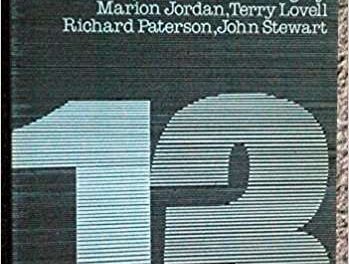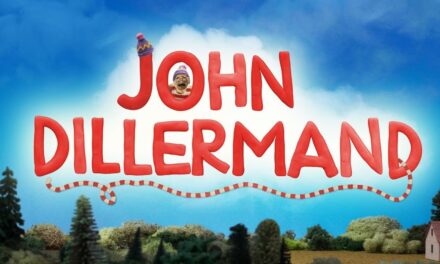I’m passionate about the written word but conversely, I’ve turned to digital media to encourage people to read. This has included a series of online comics celebrating Nottingham’s literary history for Dawn of the Unread, and an app called the Sillitoe Trail which explores Alan Sillitoe’s debut novel Saturday Night and Sunday Morning (1958). More recently, I’ve turned to the video essay as a means of simplifying complex biographical information about the writer D.H. Lawrence (1885-1930). In this blog, I’d like to share how the video essay has helped students better engage with their literary studies and how it has helped me develop deeper immersion with my area of research.
Like many academics, the sudden move to online teaching brought about by the Covid-19 lockdown forced me to innovate in how I taught. Students were having a difficult time engaging online so rather than upload a pre-recorded face to camera lecture, I learned how to edit videos in Canva and Final Cut Pro so that I could make the lectures more engaging. I was immediately hooked and wanted to continue with this means of disseminating information but was unsure how to once we returned to face to face teaching.
One recurring problem in academia is getting students to read from the original source in preparation for seminar discussions. As many now find themselves commuting to university from home to save on rent and given that most own a smartphone to communicate, I decided to disseminate information in a variety of formats that they could access on the go. This was for a module about the English writer D.H. Lawrence (1885 – 1930) and included a blog, Instagram posts, and a monthly video essay.
I should point out that I have the additional incentive to produce this content because I am the producer of a digital project called The D.H. Lawrence Memory Theatre and have embedded this into a third-year creative writing module so that students gain practical experience of how to produce a digital literary project.
The ‘Locating Lawrence’ video essays are a monthly recap of his letters, published on the centenary of when they were written. It draws attention to the rhythms of his life and the gradual unfolding of ideas while ‘freshening’ up the module by producing information in real time – as opposed to regurgitating the same material each year. Lawrence lived a nomadic life, never living in the same place for more than two years since his self-imposed exile in 1919. The use of archival footage helps visualise his life and provide context to the places he wrote about. Basing the video essays on his letters raises awareness of the original source and helps guide students to specific events should they choose to explore this further. It has had a profound impact on seminar discussions and raised student confidence in subject knowledge.
Instead of writing a traditional essay, students produce their own video essay on a theme from Lawrence’s work, using the ‘Locating Lawrence’ video essays as a benchmark. We then share and discuss their video essays on a weekly basis, thereby democratising learning. In researching and writing a script, students maintain the usual academic rigor of the traditional essay while developing digital literacy skills in sourcing copyright free images, audio recording, editing and producing the videos, uploading, tagging, and promoting. The output is useful in terms of employability as they have something tangible to show employers (Walker, 2018; 2023).
The reading, researching and production of the video essays are slow processes. Considering which extracts to use from Lawrence’s letters while trawling archives for appropriate images enable deeper immersion in the subject. For example, Lawrence once lived in Taos, New Mexico, which became a refuge for many artists in the 20th century. In finding appropriate images for the area, I visited the Mabel Dodge Luhan papers at Yale University website and through this read more widely about the literary figures here during this period to ensure representations were correct. This inevitably led to various rabbit holes of additional research as the desire to know more overtook the function of finding an image.
The production of the video essays provides a healing aesthetic experience. Shusterman’s (1999) concept of somaesthetics – a philosophical framework that focuses on the body’s role in aesthetic experience – is relevant here as it highlights the importance of cultivating sensory perceptions. From this perspective, the embodied experience of reading is more than just an intellectual activity. Holding Lawrence’s letters and turning the page engage the senses, providing awareness of the body in space and time. Slowly sourcing images from the archives to ensure representations are accurate allows for deeper engagement with the material, similar to meditation. Ironically, making the video essays – which are labour intensive and time consuming – contrasts with the relatively brief time it takes to watch them. As Chun (2016) has argued, digital reshapes our perception of time and memory through habitual behaviour. “Creating the video essay can be seen as a disruption of the habitual time dictated by digital media, where the user steps out of an accelerated consumption loop and engages in a slower, more reflective process” (Walker, 2025) providing an antidote to the immediate gratification of our digital lives.
Lawrence died in March 1930 so I will be making these monthly videos for another five and a half years, finishing the project in March 2030. It provides a simple rhythm to my life that I find calming. The question is, what will I do in April 2030?
James Walker is a senior lecturer in Creative Writing and English at Nottingham Trent University. He specialises in digital storytelling projects on a variety of platforms, such as Instagram and interactive fiction on itch. James is currently working on Whatever People Say I Am – a series of online comics challenging stereotypes, and the video essay series Locating Lawrence.
References
Chun, W. (2016). Updating to remain the same: Habitual new media. MIT press.https://doi.org/10.7551/mitpress/10483.001.0001
Shusterman, R. (1999). Somaesthetics: A disciplinary proposal. The Journal of Aesthetics and Art Criticism, 57(3), 299-313. https://doi.org/10.2307/432196
Walker, J. (2018). Time to ditch the traditional essay!. Journal of Writing in Creative Practice, 11(2), 267-273.https://doi.org/10.1386/jwcp.11.2.267_1
Walker, J. (2023). The importance of delayed gratification: D.H. Lawrence and the visual essay. Viewfinder Magazine, 122. https://learningonscreen.ac.uk/viewfinder/articles/the-importance-of-delayed-gratification-d-h-lawrence-and-the-visual-essay/
Walker, J. (2025) ‘Borrowed Time’ in eds: Dancus, Adriana Margareta & Alan O’Leary ELLA: Literature and the Video Essay: Researching and Teaching Literature Through Moving Images Vol.3(2), https://doi.org/10.58215/ella.71



![SHOW, [DON’T ASK] DON’T TELL: QUEER REPRESENTATION IN STAR TREK: ENTERPRISE by Melissa Beattie](https://cstonline.net/wp-content/uploads/2025/04/QUEERENT-440x264.png)

